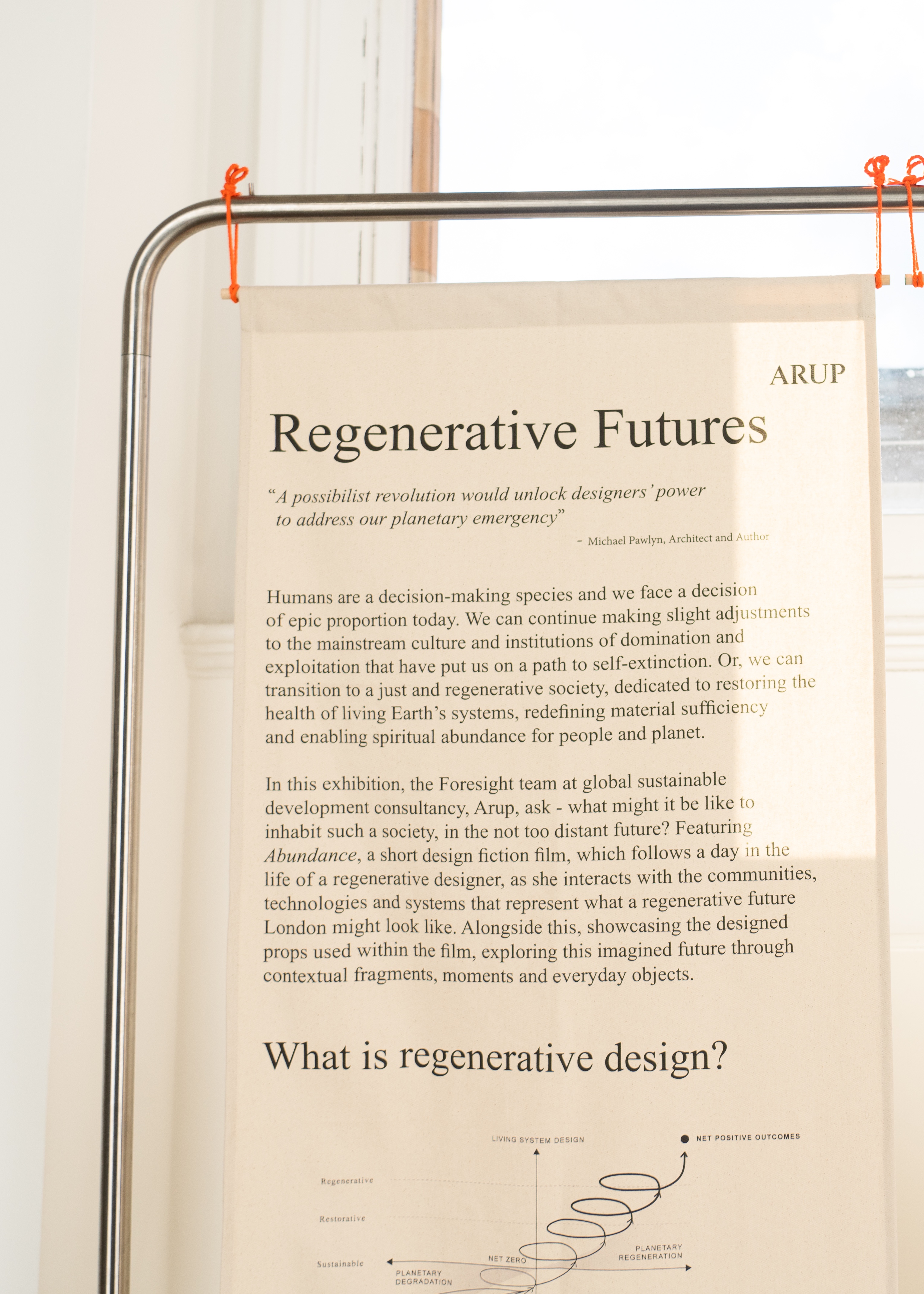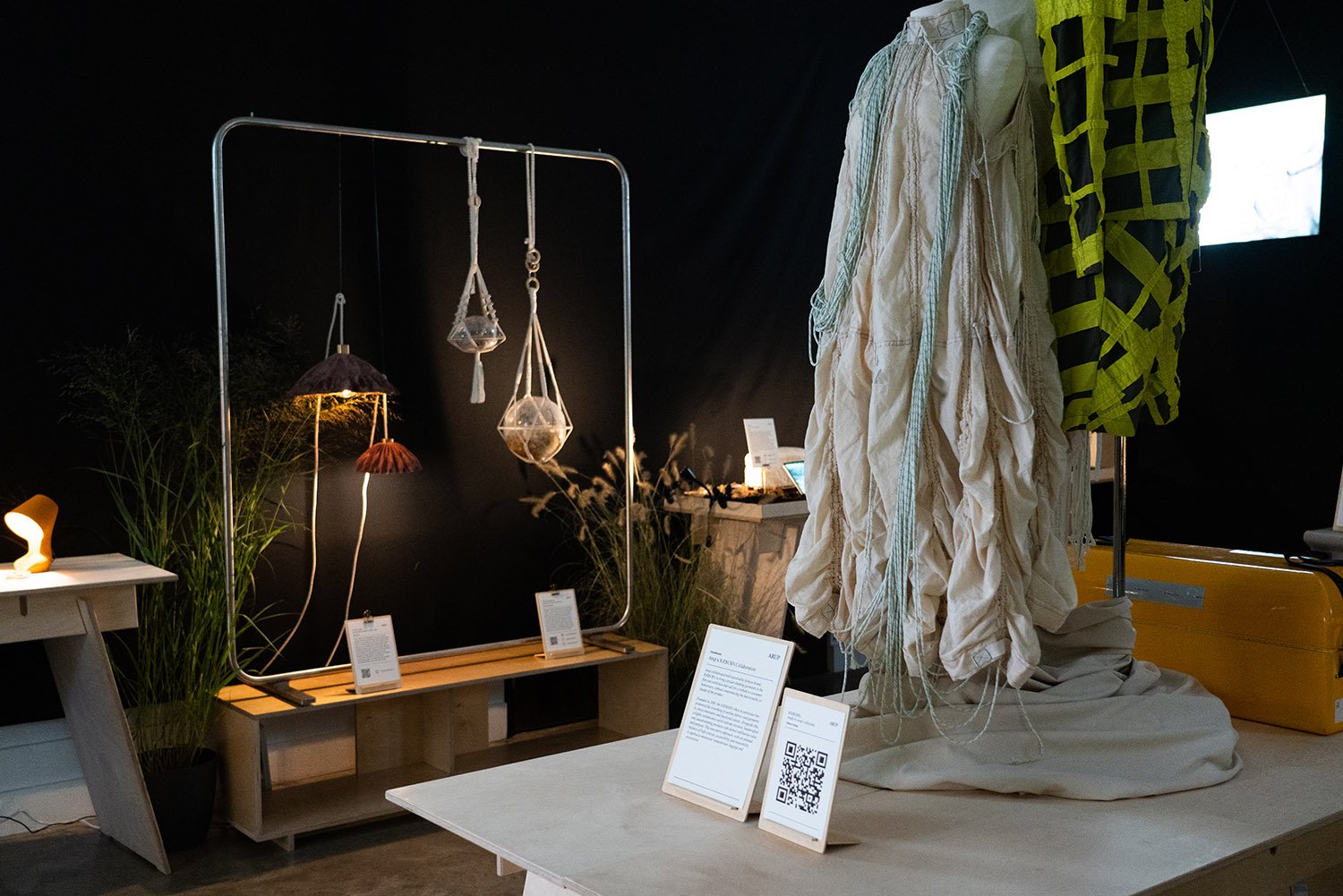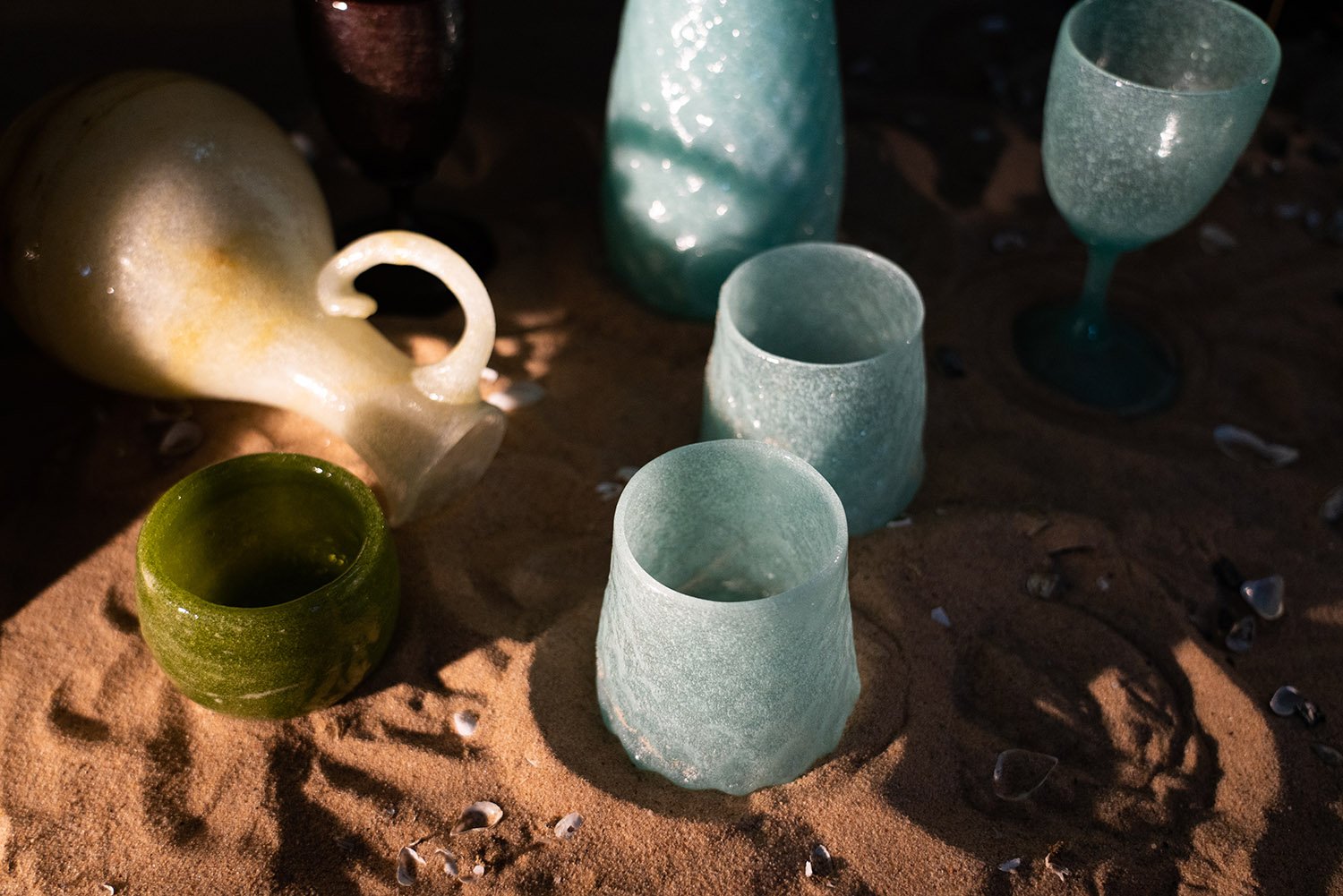Regenerative Futures


 Images: Exhibition introductory text & materials
Images: Exhibition introductory text & materialsHumans are a decision-making species and we face a decision of epic proportion today. We can continue making slight adjustments to the mainstream culture and institutions of domination and exploitation that have put us on a path towards extinction. Or, we can transition to a just and regenerative society, dedicated to restoring the health of living Earth’s systems, redefining material sufficiency and enabling spiritual abundance for people and planet.
In Regenerative Futures, Arup asks — what might it be like to inhabit such a society, in the not too distant future? Featuring Abundance, a short design fiction film, which follows a day-in-the-life ofa regenerative designer, as they interact with the communities, technologies and systems that represent what a regenerative London could look like. Alongside the film, the exhibition showcases a series of props used in the production, putting this plausible future within reach, through contextual fragments, moments and everyday objects.
For the exhibition, Arup collaborated with sustainable fashion brand, RÆBURN, to bring circular thinking garments to the film and exhibition, that call for a rethink to consumer behaviours without compromising the functionality or beauty of the product. Other pioneering regenerative designers featured in the exhibition include: EOOS NEXT, a social enterprise that strives for positive change by designing transformative technologies in the field of mobility; Blast Studio, a practice which transforms urban waste into sustainable furniture and artefacts thanks to 3D printing and living organisms; Lulu Harrison, a sustainable glassmaker; Rachel Horton-Kitchlew, a fungal materials designer; Green & Blue, a practice designing sustainable products for nature; SPACE10, a research and design lab on a mission to create a better everyday life for people and the planet; Studio MOM, a product and brand design studio; and Krill Design, a design studio specialising in circular and sustainable process.

Image: Regenerative Futures. From left to right; Coral Lamps produced usinf waste coffee cups by Blast Studio,
Urban Fungarium by designer Rachel Horton Kitchlew and clothing by circular fashion brand RAEBURN.

Image: Thames Glassware, blown using waste quagga mussel shells from the River Thames. By glass artist and materials designer Lulu Harrison.
Design Team
Regenerative Futures
Malina Dabrowska
Project manager & producer
Arup
Lauren Davies
Designer & producer
Arup
Tobias Revell
Designer & project advisor
Arup
Eleanor Tomlinson
Designer & producer
Arup
Emily Clements
Designer & producer
Arup
Emily Wang
Designer & runner
Arup
Aaria Anand
Designer & runner
Arup